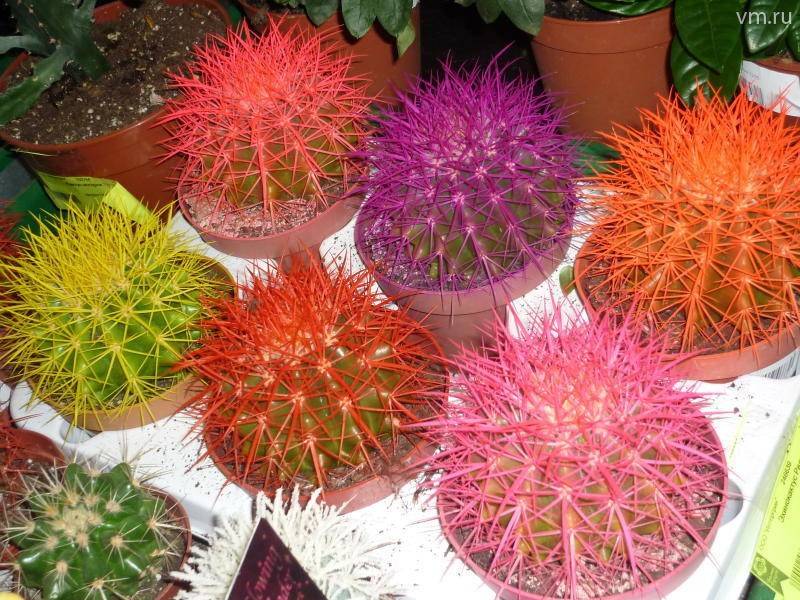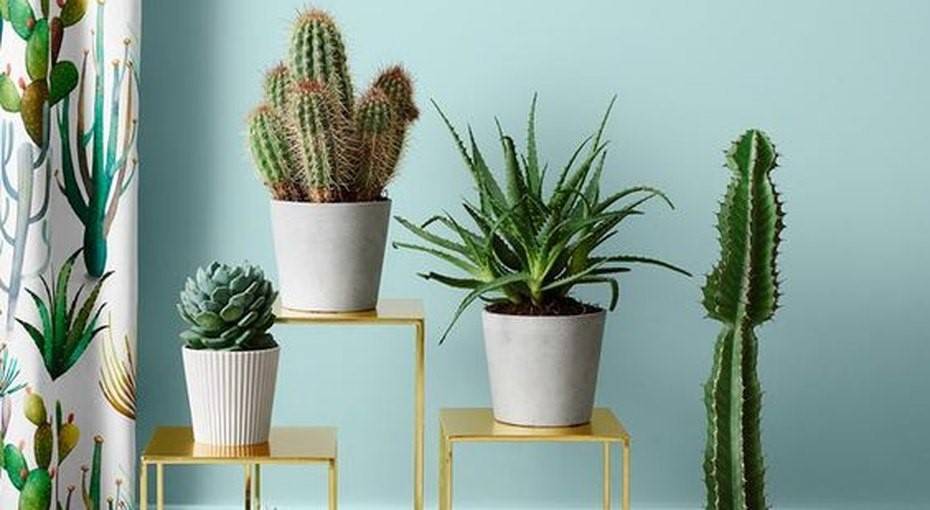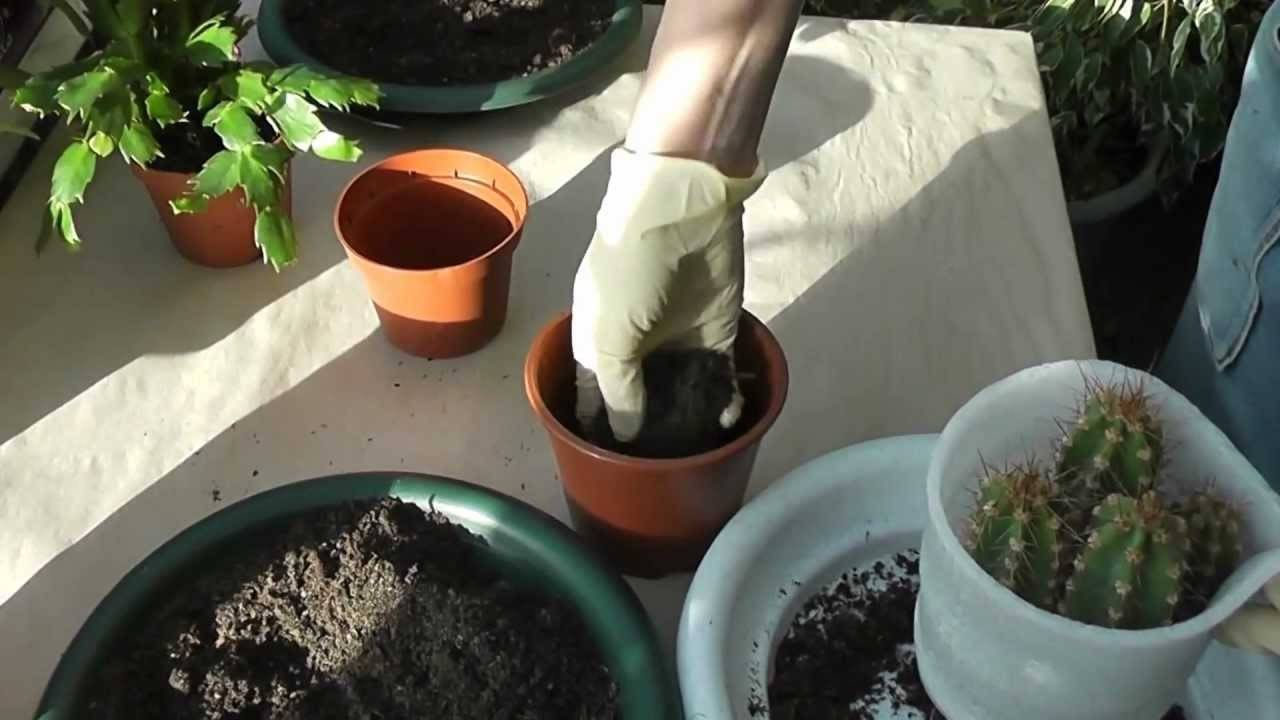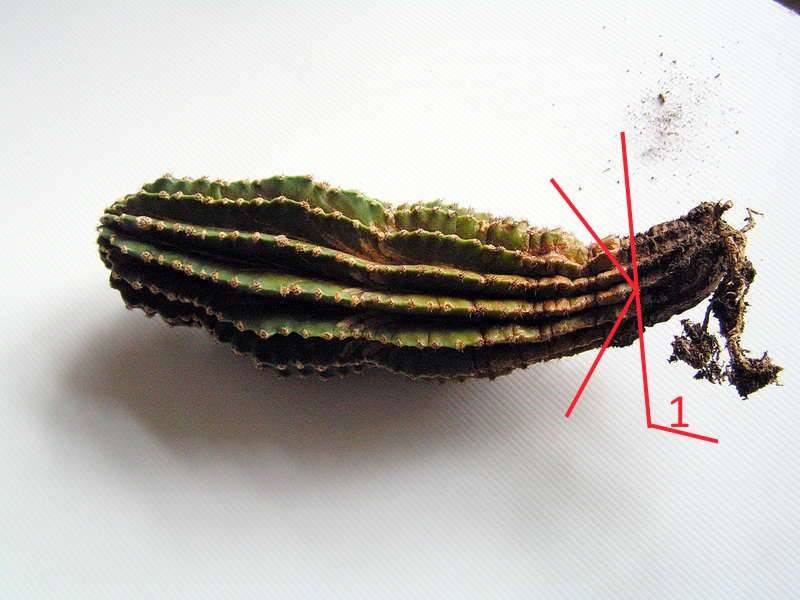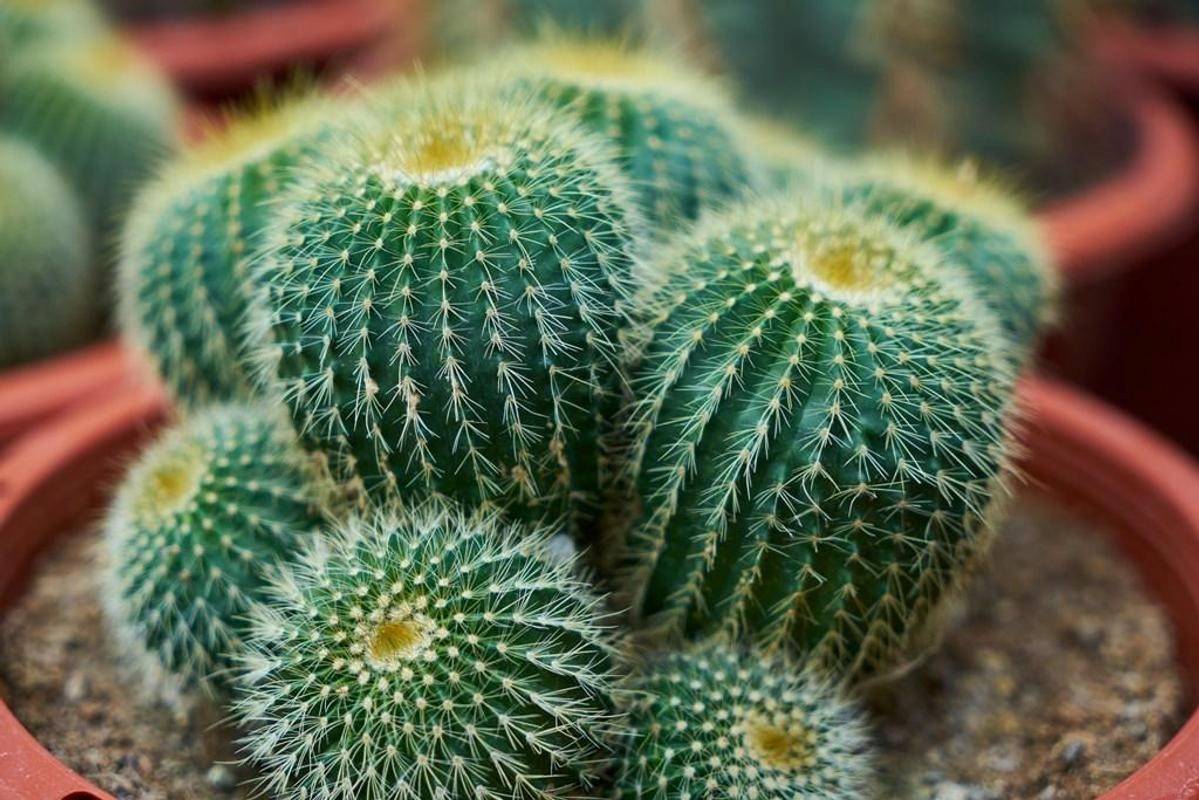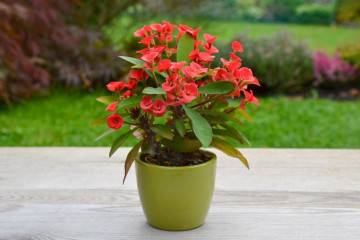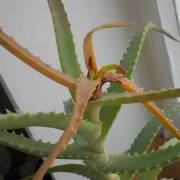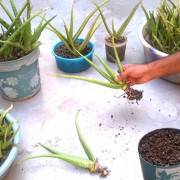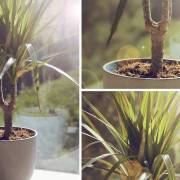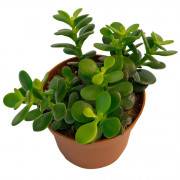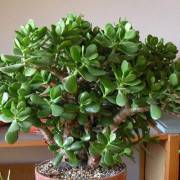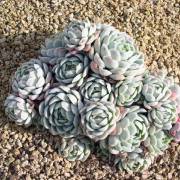How to care for a cactus: examples at home
Content:
Cacti are unpretentious indoor plants. There is an opinion that the flowers do not need care at all. However, in such would-be flower growers, cacti will never bloom, since they are not given the required attention. How to care for a cactus at home in order to enjoy the splendor of red, yellow, purple, snow-white and blue flowers?
Caring for a cactus at home
Following agrotechnical practices will help you get a healthy, flowering plant. Caring for a cactus does not cause any particular difficulties.
Watering
The frequency of watering depends on the location of the pot, the presence or absence of direct sunlight, and the season. Indoor humidity also plays an important role.
In summer, there is intense growth, so you need to water more often than usual. It is better to do this in the morning, using settled water for this purpose.
With the arrival of autumn, watering should be gradually reduced. In winter, waterlogging of an earthen coma should not be allowed, as the root can rot.
Temperature
Winter maintenance should take place in a cool room. This condition is necessary for the setting of flower buds and future flowering.
Air humidity
Plants need moderate humidity and constant ventilation. Cacti will not grow in stale greenhouse conditions. However, being in a constant draft is fraught with the development of root rot.
It is recommended to spray the plantings more often, especially in summer. It is better to do this in the evening, when the sun will not fall on the flowers, otherwise the vegetative parts will get burned, wrinkle a little.
Lighting
Caring for cacti is all about choosing the right light level. They do not tolerate both an overabundance of lighting and a lack of it.
Soil and fertilizing
Top dressing should be carried out with complex fertilizers with a low nitrogen content. If there is an excess of this component in the soil, then the cactus is characterized by rapid growth, which negatively affects the plant itself. This gives a lot of children to the detriment of flowering, the skin bursts, as the delicate tissue simply becomes thinner.
Having received an answer to the question of how to properly care for a cactus at home, it is important to conclude for yourself that for good growth it is necessary to surround the plant with attention and care.
Cactus transplant options
Many do not transplant cacti for fear of injuring their hands with thorns. To avoid injury to the skin, it is recommended that you resort to some tricks.
It is convenient to transplant with tweezers. However, this does not always give a positive result, since some thorns break, and the plant loses its decorative appearance. Better to use plastic tweezers.
You can use paper. They wrap a cactus with it, turn the pot over, knock on the bottom. Thus, the plant is removed from the flowerpot quite easily.
A drainage layer must be poured onto the bottom of the new pot, and then an adult specimen must be transferred and planted. The void should be filled with soil. Expanded clay, pieces of broken brick can be used as a drainage filler.
Usually cacti are grown in miniature pots, which are many times smaller than the plants themselves. So that the thorny giant stands steadily on the window and does not topple over, does not scatter the soil and does not break when falling, it is recommended to put something heavy on the bottom of the pot, for example, a stone.
After transplanting, the plant must be quarantined; it must not be watered for 3 days.
What time to choose for transplanting, because in winter they are at rest, in spring or summer there is abundant flowering, and in the fall there is active preparation for the rest period?
Plants are often overloaded, which means that transplantation is possible at any time of the year. But December is considered the most optimal. Even though the plant has buds and flowers, you can transplant at any time.
Blooming cactus
Unfortunately, flowering lasts very little. Some specimens throw out long stalks, on which gorgeous flowers bloom. But they only last a day. Prolonged flowering is observed in Mamillaria.
Required conditions for flowering
To wait for the cactus to bloom, it is necessary to organize a dormant period in a cool room, especially the Decembrist requires. This variety will not show the beauty of its flowers if it is not provided with cool content. Since the plant begins to bloom in December or January, it should be in a cold room in October and November.
After flowering, seeds may begin to set on the plant. If the plans do not include seed reproduction, do not wait until the seed pod is fully ripe. The plant spends a lot of energy on this, so it is better to cut off the faded flower.
Pruning cactus
What is the procedure for and how to properly cut a cactus? How to update a plant? The answers to these and many other questions are below.
Is it possible to prune a cactus
Some varieties of cacti require pruning. For them, the procedure is vital. Some people need pruning for re-rooting, for example, if the fact of rotting of the root system is detected.
Cropping is necessary if:
- the shape of the plant has changed markedly;
- asymmetric development is observed;
- the stem has become thinner, stretched out.
Diseases of cacti occur as a result of non-compliance with the rules of care. Together with them, pests are connected to the plants.
Pruning is needed if rotting has begun as a result of neglect of proper care:
- excessive watering;
- using unsuitable soil;
- lack of drainage;
- large pot volume.
Pruning as a result of the detection of rot is simply necessary, as this will entail the death of the crop.
Pruning rules
It is important to prepare sterile materials and instruments before pruning. You can carry out the procedure with a clerical knife, it is quite sharp, so with its help it will be possible to make an even cut, and not break delicate tissues.Before trimming, you need to disinfect the tool by disinfecting the blade with alcohol.
In order not to drive a mass of thorns into the skin of the hands, it is recommended to prepare a towel or plain paper folded in several layers. Plastic tweezers will help remove the plant from the pot.
Pruning succulents at home, step by step instructions:
- It is necessary to prepare the mother plant that needs pruning.
- A cactus taller than 15 cm should be cut from the top of the head. A small specimen must first be removed from the pot.
- Pruning should be done to healthy tissue. This is important if rot develops.
- After that, you need to sharpen its base like a simple pencil. After the plant has been left to dry for a while, the sharp center will be pulled inward. Drying is carried out within 2-3 weeks.
- At the end, all sections must be treated with charcoal.
How to root a cactus properly after renewal? After the cutting is dry, it is placed in the ground and waited for it to take root.
How to propagate a cactus
Reproduction of cacti is possible by seeds and branches from the base - by children.
Children
Propagating by children is the easiest and fastest way to get new plants that quickly start growing.
After separating the shoots from the mother plant, it is recommended to dry them for several days. In this way, the sprouts will quickly sprout their own root system.
It should be planted in the ground only after the place of detachment from the mother plant of the baby heals.
Landing is carried out in dry ground, without deepening for a long distance.
The stem of a cactus can be cut across into several parts, this is especially true for milkweed. However, it is important to remember where is the bottom and where is the top, since the plant will not be able to grow upside down. The top planted in this way will quickly rot.
During the taking of the shoots, it is undesirable to allow the mother plant to remain naked and not beautiful. You need to separate only those children who grow asymmetrically.
Florists often face such a problem when transplanting as root rot. The disease develops as a result of insufficient drying of the cut of the baby. An infection gets into it, and the specimen dies.
To avoid rot, you need to follow 2 simple rules.
- Firstly, a separated baby should never be immediately put in a permanent place. Compulsory drying is required.
- Before planting, you can dip the cut in garden sulfur, cut off only with a sharp knife.
Planted babies need to be watered with care.
Seeds
Cacti propagate easily by seed. High seed germination is observed in Echinocactus. In the flower shop you can find mix seeds: rebutia, prickly pear, mammillaria. However, when growing from such planting material, you need to be patient, since cactus grows rather slowly.
On the Internet, you can find information that seed germination lasts for a long time, almost a year. One thing is for sure, the long wait is due to improperly created conditions. Under favorable conditions, the seeds germinate very quickly. Within 2 weeks, small growths can be seen on the soil surface.
But seedlings grow for a long time. It's true. You can plant seeds at any time of the year. They are sown on the surface of the moistened soil. It is recommended to cover the container with plantings with glass and put it in the warmest place, above the battery in winter.
To propagate the mammillaria cactus, babies and seeds can be used. It is, of course, better to breed with children, however, with this approach, a rapid degeneration of the variety occurs. Mammillaria becomes smaller, red, white, yellow flowers rarely appear, grows slowly.It is better to use seed propagation to update the collection.
Caring for cacti is easy. However, you should not listen to those would-be flower growers who unanimously repeat that succulents need minimal attention. Yes, under such conditions, of course, they will not die, but their development will not correspond to the norms. And they will not bloom either. Everything should be in moderation and with a soul.

